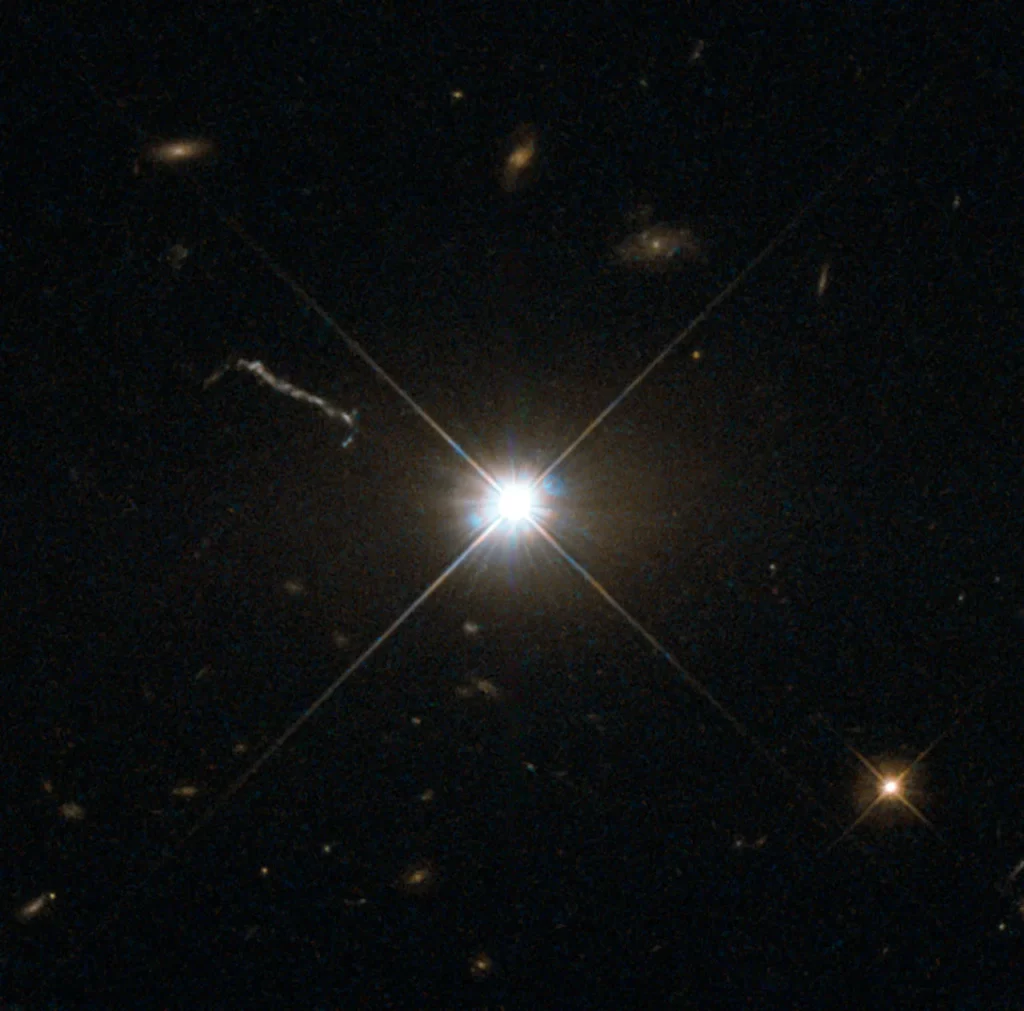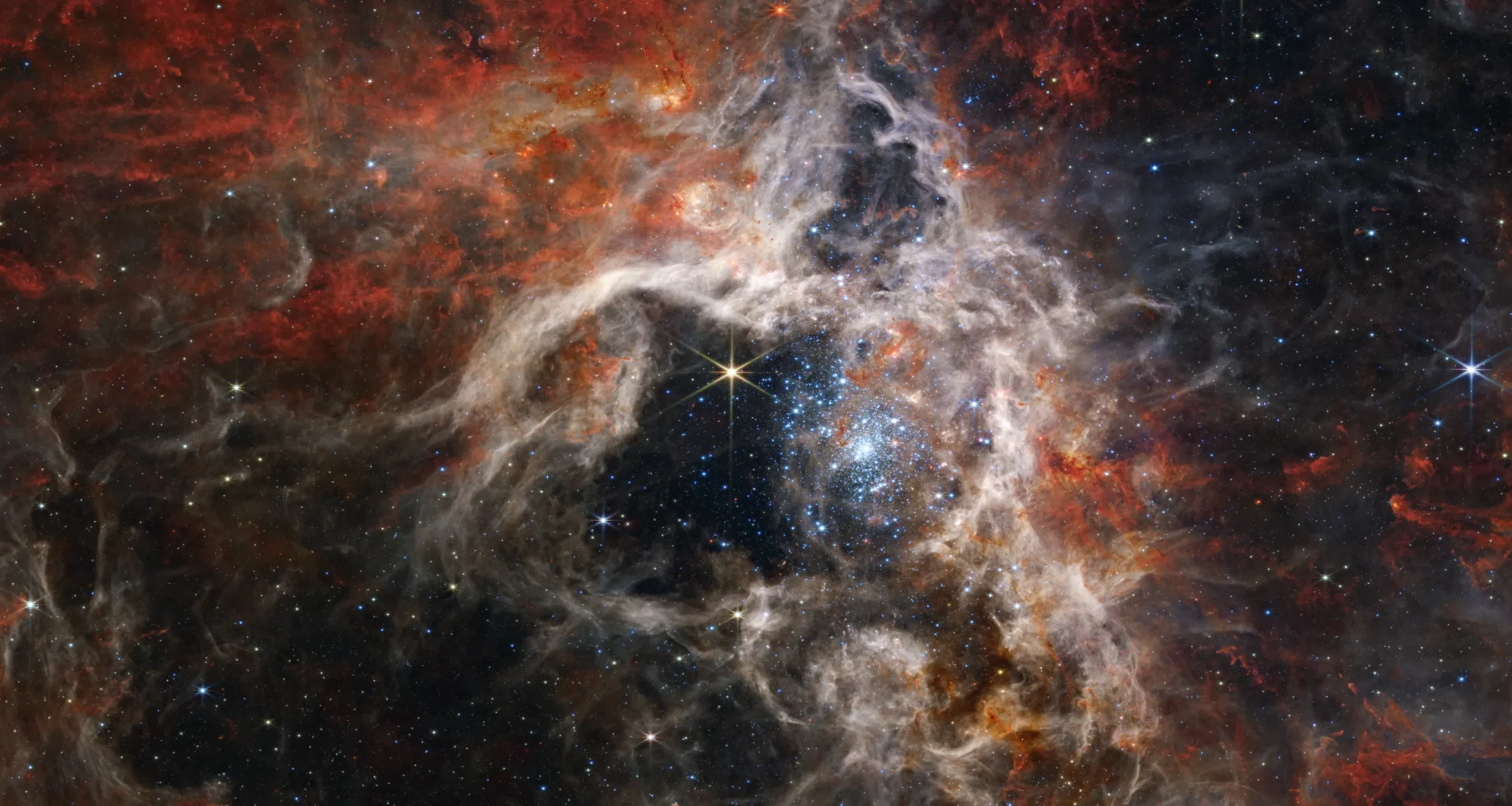Space scientists have discovered the hottest place known in the universe where temperatures reach an amazing 10 trillion kelvin (roughly 18 trillion °F, or 10 trillion °C).
The Quasar 3C 273 is the hottest place in the universe, that we know of. Roughly 1.9 billion lightyears away, residing in the large elliptical galaxy in the Virgo constellation. The photograph below was taken by Hubble’s Wide Field and Planetary Camera 2 and showcases quasar 3C 273, and took 2.5 billion years to reach us.
Note: as a comparison, the Sun’s core reaches 27 million °F or 15 million °C.

What is a Quasar?
Scientist discover the hottest gas in the universe
Back in 2009, Scientists from JAXA reported the hottest gas in the Universe reaching up to 300 million degrees . C, you can read all about it below.
A cloud of searing gas is surrounding a swarm of galaxies clustered together five billion light-years away in the constellation of Virgo.

The cosmic hotspot was detected by an X-ray telescope board a Japanese satellite called Suzaku. The cluster of galaxies, labelled RXJ1347, is five million light-years wide.
Scientists combined their results with X-ray images taken by NASA’s Chandra space telescope to reveal that the record-breaking gas is contained within an area 450,000 light-years wide that is shining like a spot light.
Astronomers are puzzled because the gas is many times hotter than any observed in galaxies before. By comparison, the centre of the sun is burning at “only” 15 million degrees C.
Their best bet to explain the gas’s searing temperatures is that the galaxies collided violently with another swarm of galaxies at a speed of 2,500 miles per second.
Assistant Professor Naomi Ota of the Tokyo University of Science said: “This is a terrible event. These collisions of galaxy clusters are the most violent celestial events in terms of energy since the Big Bang.” Read more of her report here.
Spectacular images of galaxies colliding have been collected by Hubble. And one particularly impressive cosmic pile-up was captured by Chandra and the giant Canada-France-Hawaii Telescope on Hawaii.





